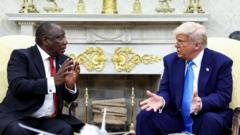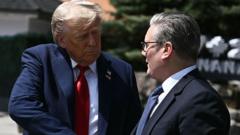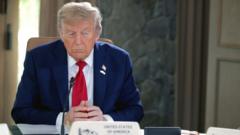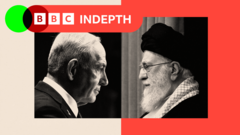Rob Hoatson, the organizer of a display of white crosses in South Africa aimed to honor a couple murdered on their farm, contends that Donald Trump inaccurately described the crosses as a burial site. This misrepresentation emerged during a tense White House meeting with South African President Cyril Ramaphosa, where Trump used the imagery to claim white farmers faced systematic violence.
Memorial Misunderstood: Trump Misrepresents South African Cross Display

Memorial Misunderstood: Trump Misrepresents South African Cross Display
Farmer clarifies installation of white crosses as a temporary memorial, not a burial site, amid Trump’s misleading portrayal.
The man responsible for a notable display of white crosses in South Africa has clarified that these markers, shown during a meeting with U.S. President Donald Trump, are not a burial site as the president suggested. Rob Hoatson, who organized the memorial in KwaZulu-Natal, indicated that the crosses were intended to commemorate the lives of Glen and Vida Rafferty, a couple murdered in 2020, rather than suggest a larger pattern of violence against white farmers.
During a poignant moment in the Oval Office, Trump presented a video of the memorial to South African leader Cyril Ramaphosa, asserting that over 1,000 white farmers had been killed, framing it as an argument for targeting white farmers in South Africa. He expressed, "These are burial sites… those cars aren't driving, they're stopped there to pay respects." However, Hoatson rejected this narrative, stating, “It’s not a burial site, but it was a memorial. It was not a permanent memorial.”
Hoatson elaborated that the crosses, which numbered over 2,500 and lined a roadside, were temporary markers reflecting the tragic events surrounding the Raffertys’ deaths. Although he acknowledged the use of the video without his consent, he felt compelled to correct Trump’s exaggeration for the record.
The discussion around the crosses was set against a backdrop of alarming crime statistics in South Africa, which are often used in political debates. Ramaphosa confirmed the existence of crime in the region but countered that the victims vary significantly in demographics, stating that many of those affected are not solely white individuals.
Despite the tension in the meeting, some Afrikaners welcomed the spotlight on their issues through Trump's remarks, while others criticized the ongoing narrative as exaggerated and misleading. Political analysts noted that Trump's confrontation with Ramaphosa stemmed from a cycle of misinformation among some factions in the U.S. regarding the true state of farmers’ safety in South Africa.
This incident underscores the complexity of international relations and the potential for divisive rhetoric to dominate perceptions of critical issues in global discourse.





















